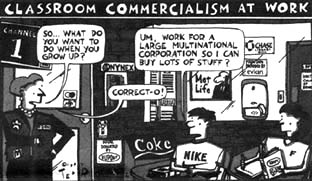From meetings that started at 11 pm to changing the media of our final project a few days before the due date because of our inexperience with the technology, I was always learning something during the 3 marketing assignments. A few of my favourite takeaways:
1) Meeting in person is always the best way to go. After filling out 3 different “Doodle Schedules” to no avail, my group had to shrug our shoulders and agree to simply meet online rather than in person. It worked, but messages got crossed, and Google Drive’s discussion feed made it difficult to follow conversations. However, the one time where classes were cancelled and we met face to face was amazing and taught me the value of direct communication. We were more productive in that 1.5 hour meeting than we were in a 3 hour session online, communication flowed, messages were sent and received clearly… it was like magic. Even in a technological age, meeting in person will always be necessary.
2) Learning new media is difficult. Although we went through two sessions with the magicians at the CLC and spent additional time practising, it was amazing how difficult it was to work the technology needed to make a video similar to Khan Academy or Minute Physics. While I’d love to continue learning how to use different digital media forms, I’ve learned that even with lessons, final projects are not the place to experiment with new forms of media.
3) Marketing is complex. It looks simple – just put what’s in the textbook on a set of flashcards and do well on the exam. However, during the project we were exposed to plenty of little nuances and different interpretations of terms, and in this realised just how complex and detailed of a field marketing is. Thankfully, to me this makes it all the more interesting!
4) After writing 2 reports about it and making a video, I never want to drink an Odwalla smoothie again. Ever 😛
Thanks for reading! Until the next blog assignment,
Jen


